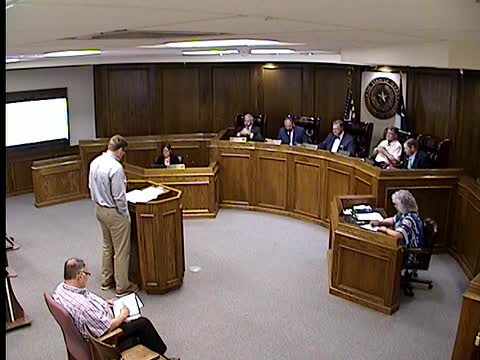Lubbock 911 Transition to Next Generation System Enhances Emergency Response Capabilities
July 28, 2025 | Lubbock County, Texas
This article was created by AI summarizing key points discussed. AI makes mistakes, so for full details and context, please refer to the video of the full meeting. Please report any errors so we can fix them. Report an error »

The Lubbock County Commissioners' Court meeting on July 28, 2025, focused on the advancements and budget considerations of the local 911 emergency response system. Representatives from the 911 district presented updates on their transition to a next-generation system, which enhances connectivity and response capabilities across the county.
The district, governed by a board of managers from participating entities, reported significant progress in modernizing their infrastructure. Over the past seven years, they have shifted from a legacy phone network to a more advanced system that supports various technologies, including mobile apps and devices like iPads and vehicles. This transition positions Lubbock as a leader in emergency response technology in Texas.
The budget for the 911 system has seen a notable decrease, attributed to efficient management and the replacement of equipment every five years. Despite this reduction, there is a slight overall increase when factoring in equity adjustments. The representatives emphasized the importance of community feedback on the budget, as mandated by state legislation.
One of the key features of the new system is its ability to reroute calls during emergencies, allowing any of the six Public Safety Answering Points (PSAPs) in the county to handle calls from different locations if necessary. This capability was tested during severe weather events, demonstrating the system's resilience and adaptability.
The meeting also highlighted ongoing improvements in location accuracy for emergency calls, with advancements allowing for pinpointing locations within five to seven feet. Future developments include integrating alarm company notifications directly into the system, reducing the time call takers spend on false alarms.
Additionally, the district is exploring the use of artificial intelligence for real-time translation services, which would assist in communication between Spanish-speaking callers and English-speaking operators. This innovation aims to enhance the efficiency and effectiveness of emergency responses.
Overall, the meeting underscored the commitment of Lubbock County to maintaining a state-of-the-art emergency response system that prioritizes community safety and technological advancement. The next steps involve continued community engagement and further enhancements to the system's capabilities.
The district, governed by a board of managers from participating entities, reported significant progress in modernizing their infrastructure. Over the past seven years, they have shifted from a legacy phone network to a more advanced system that supports various technologies, including mobile apps and devices like iPads and vehicles. This transition positions Lubbock as a leader in emergency response technology in Texas.
The budget for the 911 system has seen a notable decrease, attributed to efficient management and the replacement of equipment every five years. Despite this reduction, there is a slight overall increase when factoring in equity adjustments. The representatives emphasized the importance of community feedback on the budget, as mandated by state legislation.
One of the key features of the new system is its ability to reroute calls during emergencies, allowing any of the six Public Safety Answering Points (PSAPs) in the county to handle calls from different locations if necessary. This capability was tested during severe weather events, demonstrating the system's resilience and adaptability.
The meeting also highlighted ongoing improvements in location accuracy for emergency calls, with advancements allowing for pinpointing locations within five to seven feet. Future developments include integrating alarm company notifications directly into the system, reducing the time call takers spend on false alarms.
Additionally, the district is exploring the use of artificial intelligence for real-time translation services, which would assist in communication between Spanish-speaking callers and English-speaking operators. This innovation aims to enhance the efficiency and effectiveness of emergency responses.
Overall, the meeting underscored the commitment of Lubbock County to maintaining a state-of-the-art emergency response system that prioritizes community safety and technological advancement. The next steps involve continued community engagement and further enhancements to the system's capabilities.
View full meeting
This article is based on a recent meeting—watch the full video and explore the complete transcript for deeper insights into the discussion.
View full meeting
